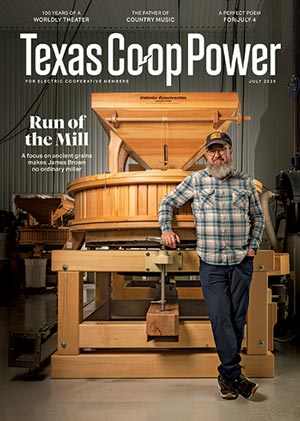It’s hard for people today to understand just how popular singer and songwriter Jimmie Rodgers was during the 1920s and ’30s. Think Elvis in the ’50s, the Beatles in the ’60s or Taylor Swift today. Southerners joked that the typical Depression-era shopping list was a pound of butter, slab of bacon, sack of flour and the new Rodgers record.
Rodgers was born in Mississippi in 1897, but he declared in song that Texas was “a state I dearly love.” He proved it by moving here in 1929.
He grew up the son of a railroad gang foreman but showed a fondness and knack for show business from an early age. Convinced he was well on his way to fame and fortune after winning a talent contest when he was 14, he ran away from home with a traveling medicine show before his father put him to work on the railroad.
In 1924, when he was 27 years old, doctors diagnosed Rodgers with tuberculosis. Sensing that his time was short, he quit the railroad and devoted himself to playing music. Over the years, he had compiled a repertoire that included traditional folk songs, jazz, blues, vaudeville tunes and yodels—the sounds of America.
Rodgers played on street corners and at tent shows—anywhere he could. He performed at an Asheville, North Carolina, radio station in 1927 with the Tenneva Ramblers. And when the band learned that the Victor Talking Machine Co. (later RCA Records) was holding recording sessions in Bristol, Tennessee, they decided to go. Until the Bristol sessions, radio stations didn’t play country records because they had precious few to play.
The two songs Rodgers recorded in Bristol didn’t do much, but a second session, in Camden, New Jersey, included Blue Yodel No. 1, which sold a half-million copies and is better known as T for Texas.
Rodgers recorded more than 100 songs over the next few years, including classics like In the Jailhouse Now, Frankie and Johnny, and Waiting for a Train. He reportedly sold more than 10 million records in his lifetime.
As his health worsened, Rodgers limited his touring to the Southwest. Nearly every Texas town, regardless of size, has a Rodgers sighting in its history. Once, after a performance in Temple in 1929, he returned to his motel and started singing from the window of his room, drawing such a crowd that cops had to be called to break up the ensuing traffic jam.
Rodgers moved to Kerrville in 1929 in hopes that the Hill Country air might give him some relief from the tuberculosis that was slowly killing him. He built a house at the intersection of West Main Street and Jackson Road and called it Blue Yodeler’s Paradise.
In 1933, a gaunt and ailing Rodgers traveled to New York to make 12 new records. He recorded his last song May 24 and died two days later. He was 35.
Though his time was brief, his legacy looms large. Country performers including Merle Haggard, Ernest Tubb and Johnny Cash cited Rodgers as a major influence, but so did blues singers Mance Lipscomb, Howlin’ Wolf and Mississippi John Hurt and rockers like Lynyrd Skynyrd.
Rodgers is the only artist to be inducted into the country music, rock ’n’ roll and blues halls of fame, and that says it all.
Correction: July 11, 2025
This story was updated to remove an erroneous reference to Jimmie Rodgers’ record sales relative to Elvis Presley’s debut.



